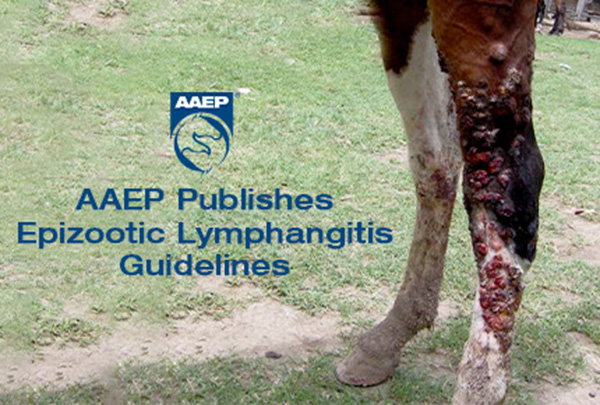AAEP Publishes Epizootic Lymphangitis Guidelines

The American Association of Equine Practitioners (AAEP) has published on its website comprehensive guidelines to assist practitioners and regulatory agencies with identification, diagnosis and control of epizootic lymphangitis, a contagious, chronic granulomatous disease of the skin, lymphatic vessels and nodes of the limbs, neck and chest of horses and other equid species.
Although epizootic lymphangitis is not known to occur in horses in the United States, the disease is common in parts of Africa, the Middle East, Russia and Asia, where it is responsible for significant morbidity with chronic weight loss and progressive debility in affected animals.
“While epizootic lymphangitis has not been recorded in the United States, its importance as a transboundary/foreign animal disease needs to be emphasized because of its similarity to several domestic diseases with which it can be clinically mistaken, including ulcerative lymphangitis and streptothricosis,” said guidelines author Peter Timoney, MVB, MS, Ph.D., FRCCVS, the Frederick Van Lennep Chair in Equine Veterinary Science at the University of Kentucky’s Gluck Equine Research Center. “Were it to be introduced, the causal agent can survive in dust and soil for an extended interval under conditions of heat and humidity, making it virtually impossible to eliminate.”
Epizootic lymphangitis is an OIE non-listed disease even though it is of significant socioeconomic importance in countries in which it is endemic, some of which engage in international trade of animals and animal products. Any suspicion of the disease in the United States is immediately reportable to the U.S. Department of Agriculture (USDA) and State Animal Health Officials in all 50 states and territories.
The Epizootic Lymphangitis Guidelines were edited and reviewed by Abby Sage, VMD, DACVIM, chair of the Infectious Disease Guidelines Subcommittee of the AAEP’s Infectious Disease Committee.
View the Epizootic Lymphangitis Guidelines or save them to your mobile device as a PDF file at https://aaep.org/document/epizootic-lymphangitis. Besides epizootic lymphangitis, AAEP guidelines for two other foreign animal diseases are available at https://aaep.org/infectious-disease-control/foreign-animal-disease-guidelines. In addition, AAEP guidelines for 22 other equine infectious diseases are available at https://aaep.org/guidelines/infectious-disease-control/using-guidelines.
About AAEP
The American Association of Equine Practitioners, headquartered in Lexington, Ky., was founded in 1954 as a non-profit organization dedicated to the health and welfare of the horse. Currently, AAEP reaches more than 5 million horse owners through its over 9,000 members worldwide and is actively involved in ethics issues, practice management, research and continuing education in the equine veterinary profession and horse industry.










